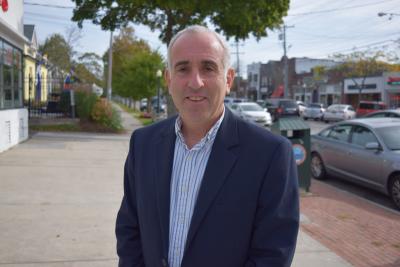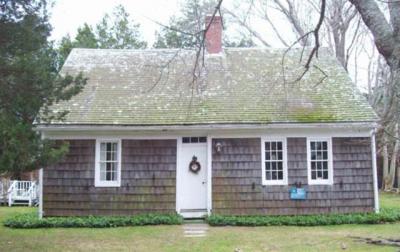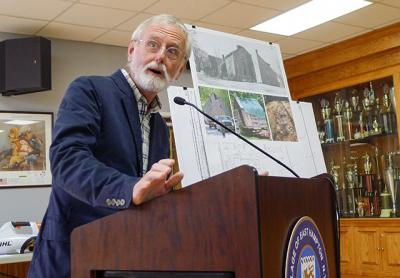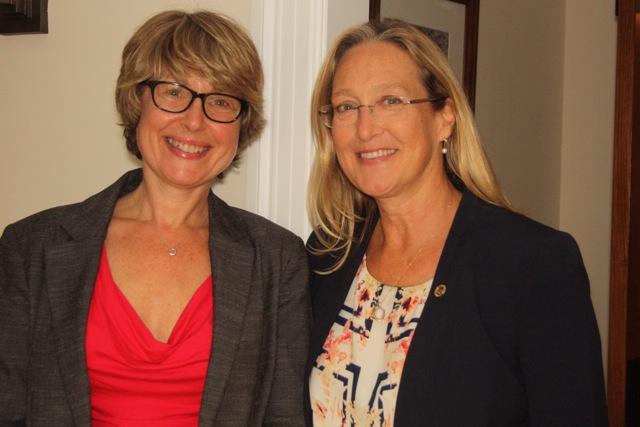Schneiderman and the Democrats Win Big
Schneiderman and the Democrats Win Big

Once the votes were counted Tuesday night, Jay Schneiderman had not only won another term as Southampton Town supervisor, but his party’s majority on the town board had gained strength.
Mr. Schneiderman’s Democratic running mates, Julie R. Lofstad and Thomas John Schiavoni, won two open town board seats, ousting Stan Glinka, the Republican incumbent. The victors will join Councilman John Bouvier, a Democrat, leaving Councilwoman Christine Scalera the lone Republican town board member.
“There has never been a Democratic supermajority on the town board,” Gordon Herr, the chairman of the Southampton Town Democratic Committee, said yesterday morning. It was a historical win for Democrats, he said, not just because of the town board election, but also because Ann E. Welker became the first woman elected to the Southampton Town Trustees in the group’s 331-year history.
Ms. Lofstad, a Hampton Bays resident who was elected to fill the empty seat left by Councilman Brad Bender’s resignation almost two years ago, received 31 percent of the vote once the results from all 42 districts came in. Mr. Schiavoni, a North Haven resident and current member of the town’s zoning board, received 27 percent. They were both elected to full four-year terms.
Mr. Glinka, who lives in Hampton Bays and works in private banking, was seeking his second term on the town board. He received 23.8 percent of the vote. His running mate, Thea Dombrowski-Fry of Hampton Bays, came in last with 18 percent.
“It was the biggest shocker in Southampton that Stan Glinka wasn’t elected,” Mr. Schneiderman said yesterday. Mr. Glinka trailed Mr. Schiavoni by 800 votes. With only about 1,000 absentee ballots cast, split pretty evenly between G.O.P. and Democratic registered voters, the supervisor said he did not think they would move the final margin much.
The Independence Party also endorsed Ms. Lofstad and Mr. Schiavoni, and Ms. Lofstad had the advantage of an additional line with the Conservative Party, giving her about 1,000 votes, Mr. Schneiderman said. “A lot of people assumed Glinka, as the incumbent, was a shoe-in. I wasn’t so sure. I thought Tommy John was a very strong candidate. He understood the issues. He is very articulate. There is no better campaigner than Tommy John,” he said.
While he was happy with the results, Mr. Schneiderman had only complimentary things to say about Mr. Glinka. “I really have enjoyed working with Stan. He’s a super nice guy. He’s really committed to small business, the business community. I consider him a friend. . . . I will miss him on the board,” he said. “He has, I think, served the town honorably. I hope he stays involved.”
_____________
‘It was the biggest shocker in Southampton that Stan Glinka wasn’t elected.’
— Jay Schneiderman
_____________
Mr. Glinka said yesterday that he was saddened by the loss but moved by the support he had received. He pointed to Democratic victories elsewhere in the tristate area. “It was a landslide sweep of Democratic candidates that won,” he said. “I was not that far behind.”
“Everything happens for a reason, and that’s the way I’m looking at it. It was an honor and a privilege to serve as councilman for four years,” he said.
Mr. Schneiderman, a Southampton Village resident, won a second two-year term, with about 62 percent of the vote. His challenger, Ray Overton of Westhampton, received 37 percent. Mr. Overton said he was disappointed, but happy with his campaign. “I was also happy to see the overall voter turnout for the election. It shows that the community cared about the results,” he said. More than 13,000 votes were cast.
A former East Hampton Town supervisor and Suffolk County legislator, Mr. Schneiderman ran on the Democratic and Independence Party lines. He recently switched his party affiliation from Independence to Democratic, but has long aligned with Democrats. The move followed a near primary in September, when Fred Havemeyer, a Bridgehampton resident, tried to force one, but the Democratic Party challenged signatures on his petitions, cutting short his attempt.
Across Long Island — and across the country — the party came up big. “The pendulum has definitely swung back toward the Democrats,” Mr. Schneiderman said. “You have to remember it was only a year ago that Suffolk County voted for Trump.” Voter turnout was up — about 30 percent of Southampton Town voters came out, when usually only about 20 percent does in an off-year election, he said.
“I would not underestimate the constitutional convention issue,” he said of a proposition that was soundly defeated. “I think a lot of people who might not typically vote, not reliably vote, particularly in labor, came out strongly.”
Other Results
To get back to the trustees, Ms. Welker, a Democrat, came in fourth at the polls, earning 6,463 votes, or nearly 11 percent. Scott M. Horowitz, a Republican incumbent, trailed her by two votes for the fifth spot.
Bill Pell IV and Bruce A. Stafford, both cross-endorsed incumbents, were easily elected, with 18.6 and 18.5 percent of the vote, respectively. Edward J. Warner Jr., a Republican incumbent, was also re-elected, with 11.52 percent.
Another Republican candidate, Donald T. Law, got 10.54 percent, with 6,197 votes, while Gary T. Glanz, a Democrat, got 9.87 percent, and Ronald A. Fisher, also a Democrat, took in 8.94 percent.
Mr. Herr said he was not concerned that absentee ballots would change the results.
In another races, Alex D. Gregor was elected to his third four-year term as highway superintendent on the Democratic ticket. He received about 57 percent of the vote over Lance Aldrich’s 43 percent.
The town clerk and town justices ran unopposed. Sundy A. Schermeyer, a Republican first elected in 2006, was elected to a fourth four-year term as clerk, and Deborah E. Kooperstein, a Democrat, and Barbara L. Wilson, a Republican, were re-elected with no surprises.





